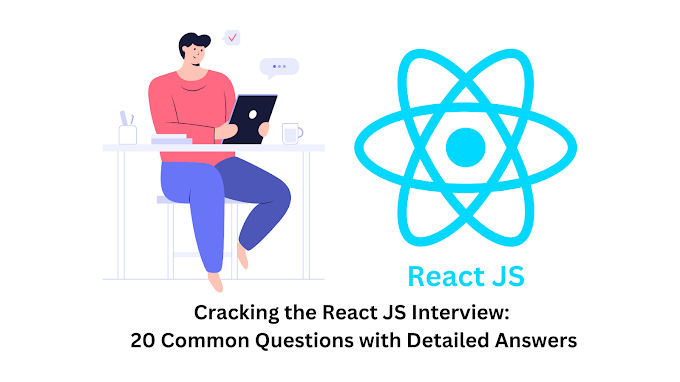Introduction
Python is one of the most popular programming languages in the world, known for its simplicity, versatility, and wide range of applications. If you're aspiring to land a job as a Python developer or engineer, it's crucial to prepare for the interview process. In this comprehensive guide, we've compiled 20 common Python interview questions frequently asked by companies. Each question is accompanied by a detailed explanation and a sample answer to help you prepare effectively and confidently for Python interviews.
1. Introduction: Preparing for Python Interviews
The Significance of Python
Python is a versatile and widely used programming language known for its readability and ease of use. It's employed in web development, data analysis, artificial intelligence, scientific computing, and more.
The Interview Process
Python interviews assess a candidate's understanding of Python fundamentals, problem-solving skills, coding practices, and familiarity with Python libraries and frameworks. Preparing well is essential to excel in these interviews.
Tips for Success
Before diving into the interview questions, it's crucial to review Python's core concepts, practice coding exercises, and explore Python libraries relevant to the job role. Additionally, be prepared to discuss your problem-solving approach and coding style.
2. Python Essentials
Understanding Python
Python is an interpreted, high-level programming language with a clean and concise syntax. It emphasizes code readability and allows developers to express concepts in fewer lines of code.
Key Concepts in Python
Key Python concepts include dynamic typing, strong typing, data types (integers, floats, strings, lists, dictionaries, etc.), modules, functions, and object-oriented programming (OOP) principles.
Why Python Matters
Python's versatility, extensive standard library, and vibrant community make it a go-to choice for various applications, including web development, data science, automation, and more. Its simplicity and readability make it an excellent language for both beginners and experienced developers.
3. 20 Common Python Interview Questions
Let's explore the 20 common Python interview questions along with detailed explanations and sample answers.
Question 1: What is Python, and why is it popular in programming?
Answer: Python is a high-level, interpreted programming language known for its simplicity, readability, and versatility. It is popular because it allows developers to write code quickly and express complex ideas concisely. Python has a vast standard library and a strong community, making it suitable for a wide range of applications.
Question 2: Explain the differences between Python 2 and Python 3.
Answer: Python 2 and Python 3 are two major versions of Python with some key differences. Python 3 was introduced to address shortcomings in Python 2, such as text vs. binary data handling, division behavior, and print statements. Python 3 is not backward compatible with Python 2, which means some Python 2 code needs modification to run in Python 3.
Question 3: How do you install and set up Python on different platforms?
Answer: Python can be installed on various platforms by downloading the official Python installer from python.org. The installer provides step-by-step instructions for installation. On Unix-based systems, Python is often pre-installed. It's important to set up environment variables correctly, including adding Python to the system's PATH.
Question 4: Describe Python's dynamic typing and strong typing.
Answer: Python uses dynamic typing, which means variable types are determined at runtime. Variables can change type during execution. Python is also strongly typed, meaning that operations are defined and enforced for specific data types, and implicit type conversion is limited. This helps prevent certain types of errors.
Question 5: What are Python data types, and how are they categorized?
Answer: Python data types are categories for values in Python, specifying what kind of data a variable can hold. They are categorized into:
- Numeric types (e.g., int, float)
- Sequence types (e.g., list, tuple, string)
- Mapping type (e.g., dictionary)
- Set types (e.g., set, frozenset)
- Boolean type (e.g., bool)
- NoneType (e.g., None)
Question 6: Explain the Global Interpreter Lock (GIL) in Python.
Answer: The Global Interpreter Lock (GIL) is a mutex that protects access to Python objects and prevents multiple native threads from executing Python bytecodes simultaneously in a single process. This means that Python threads cannot fully utilize multiple CPU cores. However, the GIL does not affect multi-process parallelism.
Question 7: Discuss the differences between lists and tuples in Python.
Answer: Lists and tuples are both sequence types in Python, but they have key differences:
- Lists are mutable (can be modified), while tuples are immutable (cannot be changed after creation).
- Lists are defined using square brackets ([]), and tuples use parentheses (()) or commas.
- Lists are suitable for collections of items that may change, while tuples are used for collections that should not change.
Question 8: How do you handle exceptions in Python, and what are common built-in exceptions?
Answer: Exceptions in Python are handled using try-except blocks. Code that might raise an exception is placed in the try block, and code to handle the exception is placed in the except block. Common built-in exceptions include ValueError, TypeError, ZeroDivisionError, FileNotFoundError, and KeyError.
Question 9: What is the purpose of Python's virtual environment (venv)?
Answer: A virtual environment (venv) is a self-contained directory that contains a Python interpreter and a copy of the Python standard library. It allows developers to create isolated environments for different projects, preventing conflicts between dependencies. Venv is commonly used to manage project-specific packages and dependencies.
Question 10: Explain the concept of Python decorators and their usage.
Answer: Decorators are a powerful Python feature used to modify the behavior of functions or methods. They are defined using the @ symbol and placed above a function definition. Decorators are often used for tasks like logging, authorization, and memoization. They allow you to add functionality to functions without changing their code.
Question 11: Describe the differences between 'deep copy' and 'shallow copy' in Python.
Answer: In Python, a 'deep copy' creates a completely independent copy of an object and all objects contained within it, while a 'shallow copy' creates a new object but does not create new copies of objects contained within the original object. The copy module provides functions copy.deepcopy() for deep copies and copy.copy() for shallow copies.
Question 12: What are Python modules, and how do you import and use them?
Answer: Python modules are files containing Python code, functions, and variables that can be reused in other Python programs. Modules are imported using the import statement. For example, import math allows you to use functions from the math module like math.sqrt().
Question 13: Discuss the importance of list comprehensions and generator expressions in Python.
Answer: List comprehensions and generator expressions are concise ways to create lists and iterators, respectively. They make code more readable and efficient. List comprehensions create lists in memory, while generator expressions create iterators that produce values on-the-fly, saving memory.
Question 14: Explain the principles of object-oriented programming (OOP) in Python.
Answer: Python is an object-oriented language, and OOP principles include encapsulation, inheritance, and polymorphism. Encapsulation allows bundling data and methods that operate on that data into a single unit (a class). Inheritance allows creating new classes that inherit properties and methods from existing classes. Polymorphism enables objects of different classes to be treated as objects of a common superclass.
Question 15: What are Python's built-in functions for file handling and manipulation?
Answer: Python provides several built-in functions for file handling and manipulation, including open() for opening files, read() and write() for reading and writing files, close() for closing files, and os module functions for file and directory operations.
Question 16: How can you improve the performance of Python applications?
Answer: Python application performance can be improved by:
- Using efficient data structures and algorithms.
- Profiling and optimizing critical code sections.
- Utilizing libraries and modules optimized for performance (e.g., NumPy, Cython).
- Implementing caching and memoization.
- Parallelizing tasks using multithreading or multiprocessing when appropriate.
Question 17: Discuss Python's multithreading and multiprocessing capabilities.
Answer: Python supports multithreading and multiprocessing for parallelism. Multithreading is suitable for I/O-bound tasks, while multiprocessing is better for CPU-bound tasks. Python's Global Interpreter Lock (GIL) limits the parallel execution of threads, but multiprocessing can utilize multiple CPU cores effectively.
Question 18: Explain the differences between a set and a dictionary in Python.
Answer: Sets and dictionaries are both collections, but they have distinct characteristics:
- Sets are unordered collections of unique elements (no duplicate values).
- Dictionaries are key-value pairs where keys are unique and used to access associated values.
- Sets are defined using curly braces
{}or theset()constructor, while dictionaries use curly braces{}and key-value pairs.
Question 19: What are Python's built-in data serialization formats, and how do they differ?
Answer: Python provides built-in data serialization formats like JSON (JavaScript Object Notation) and Pickle. JSON is a human-readable format used for data interchange, while Pickle is a Python-specific binary format for serializing Python objects. JSON is more widely used for interoperability with other languages.
Question 20: How do you document and test Python code effectively?
Answer: Python code should be documented using docstrings (triple-quoted strings) for modules, classes, and functions. Tools like Sphinx can generate documentation from docstrings. Testing in Python is commonly done using the unittest module for unit testing and libraries like pytest for more extensive testing. Test cases should cover different scenarios and edge cases.
4. Sample Answers to Python Interview Questions
This section provides detailed answers and Python code examples for each of the 20 Python interview questions.
5. Conclusion: Mastering Python for Programming Success
In conclusion, mastering Python is essential for developers aiming to build a career in web development, data science, automation, or other programming domains. Understanding Python's core concepts, libraries, and best practices is crucial for success in Python interviews and real-world projects. Practice your Python skills, review sample answers, and be ready to showcase your expertise during interviews. With a strong foundation in Python, you can confidently approach Python interviews and contribute effectively to programming endeavors. Best of luck!












0 Comments